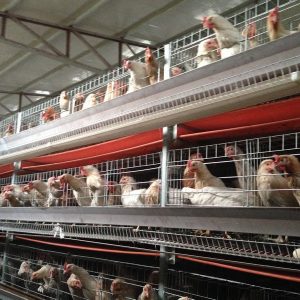In the current spring breeding season, it is very necessary to do a good job in the brooding link of black-bone chickens.
1 Preparation before picking up the chicks
, Mainly for the selection and disinfection of the breeding site, spray the ground with 5% caustic soda, dilute the night spraying utensils, feeding troughs, drinking fountains, litter, etc. with bleach powder, followed by feed, buy full feed or prepare price feed yourself, match The method should be serious. Choose high-quality millet or crushed corn residue, soak in clean water for 6-8 hours, steam on a basket for 20 minutes to dry, add eggs when feeding, add 6-8 eggs per 100 kg, rub with your hands Evenly, it will be changed to full-price nutrient pellet feed after feeding for 4-days. The full-price feed formula is: corn 54%, peanut cake 10%, bran 4% sorghum 4%, barley 5%, fish meal 8% , Bean cake 12%, locust leaf powder 3%, bone meal 2.5%, salt 0.37%, various trace elements 0.5%, multivitamin 0.005%, it is not convenient to match the feed, you can buy chicken feed prepared by the feed company instead.
2 Feeding method:
Start feeding the first feed within 36 hours from the hull (the sooner the better). Sprinkle it on the backs of the chicks and peck each other to eat the church feed. Put the plastic sheet in the middle of the brooding cage. Pile the feed and let the chicks Eat freely on your own. If you learn to eat after 3 days, change to trough feeding. Feed 6-8 times a day for 2 weeks, and 4-6 times a day after 3 weeks of age.
3 Drinking methods
Chickens have simple drinking water requirements. Basically, they use very little water during wet feeding, and use more water when feeding dry feed. Each black-bone chicken needs 10-20 ml of clean drinking water every day. The first drinking time should be earlier than the feeding time, and Add gray manganese oxide PP powder, also called potassium permanganate, to drinking water. Add 0.1 g per thousand milliliters. First dilute and dissolve with a little bit of hot water, and then dilute it into a pink liquid that is visible to the naked eye like spinach roots. Whoever wants to use it every time they drink, the diluent will undergo oxidation reaction for a long time. Drink once a day for 3 consecutive days and change to clean, non-polluting groundwater or tap water.
4 temperature control
Temperature control is a key measure, which depends on the temperature supply facilities. The air conditioner is simple and may be frequently observed. For methods such as fire kang, fire wall or insulation umbrella, plastic shed, etc., pay attention to the ** temperature, 32-34 degrees for 1-3 days , 4-7 days, 30-32 degrees, 2 weeks, 28-30 degrees, 3 weeks, 25-28 degrees, 4 weeks, 25 degrees, the natural temperature is appropriate in the future. On weekdays, you should observe the gathering of the chickens. If the surrounding temperature is suitable, they should be evenly distributed, and they can eat freely and jump and chase.
5 Humidity requirements:
In nature, the moderate dry humidity in spring and autumn is below 50%, the hot and humid in summer is about 70%, and the humidity in winter is about 80%. It is not convenient to control. The actual moisture content in the breeding house should be measured with a psychrometer and adjusted to 55%- 65% is better.
6 Lighting control:
The sunlight can promote the black-bone chickens to grow faster. The chicks will be under full light within 24 hours of the shelling, 23 hours after the 3rd order, 16 hours after the 7th order, and 12 hours in the second week gradually change to natural light. The light intensity is 10-12 lux, and the 40-watt bulb is 2 meters above the ground, and an average of 1.5-2 watts per square meter can reach the standard.
7 Density:
Density refers to the number of flat rearing. In brooding cages, only 60 shell chicks can be raised per square meter, and 50 chicks per square meter will be spread evenly within a week, and 40 chicks will be spread evenly per square meter after 3 weeks. , 4 weeks of Ling 30, 5 weeks of Ling 25, 6 weeks of Ling can be put on grass for rearing.
8 Timely cut beak:
Although black-bone chickens are small in size, the pecking power of the beak can also damage the skin. Attention should be paid to prevent the occurrence of pecking. It is best to cut the beak in 7-10 days and cut the length of the beak to the nostril. Half of the length, cut off one third of the lower beak, and then use a soldering iron to stop the bleeding, or use a semi-automatic beak cutter.
9. Do a good job in disease prevention and control:
Formulating a suitable immunization program is the foundation of disease prevention. Marek vaccine must be vaccinated within 24 hours after the shell is released on the 1st day, the Newcastle disease transmission double vaccine on the 7th day, and the bursal bursal vaccine on the 10th day. Zhou Ling repeated the vaccination against the epidemic and received the throat vaccine at 40 days of age.
Black-bone chickens contain a large amount of melanin and more than 20 kinds of amino acids, vitamins and trace elements needed by the human body. They have a strong nourishing effect. They are in short supply in the consumer market and are an indispensable item for the rural breeding industry.

